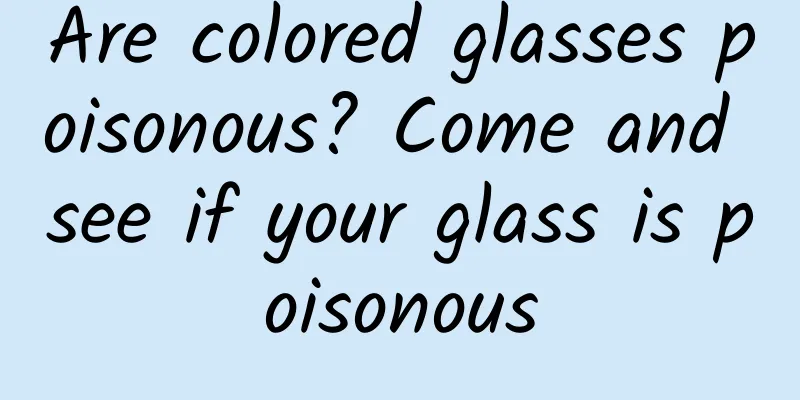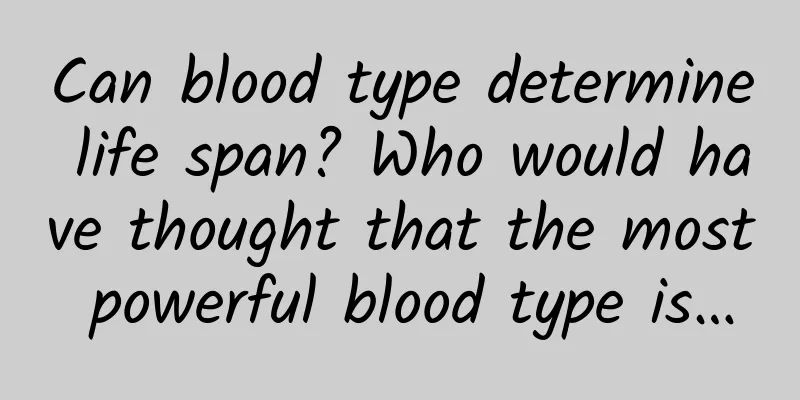Are colored glasses poisonous? Come and see if your glass is poisonous

|
gossip "Colored glass cups are poisonous and cannot be used" "There's news online that colored glass cups are all poisonous, and if you pour boiling water into them, the poisonous water will come out. You must never use them." Rumor Analysis This statement is not comprehensive. The color of colored glass comes from spray dyes or the glass itself. Buying products with certificates from regular manufacturers can avoid heavy metal pollution. Glass with its own color is safer. There is a saying circulating on the Internet that some glass cups are poisonous water cups, and when boiling water goes in, "poisonous water" comes out. The rumored poisonous water cups also have a common feature, they are beautiful and colorful, such as the colored glass cups in the picture below. The "toxic" glass cup circulating on the Internet, the picture is taken from the Internet Are all colored glass cups poisonous? How can we choose relatively safe glass cups? Let's talk about "toxic glass cups". Are all colored glasses poisonous? First of all, it should be noted that not all colored glass is toxic. To make this clear, we need to first talk about where the color of colored glass comes from. There are two sources of color in glass: one is the glass itself, and the other is formed by spraying dyes. 1. Colored glass cups with their own colors Colored glass is made by adding copper, iron, manganese, cobalt and other elements to the glass during the melting process. Through selective absorption of light, the glass presents different colors. Although the elements added during the production process include heavy metal elements, the content of these elements is not high, and they will react with silicates during melting to form a very stable structure. When such a cup is used to hold hot water, the heavy metals in the colored glass will not precipitate, so it is safer to use such a colored glass cup. 2. Painted colored glass This type of glass cup is colorless and transparent, and is dyed by spraying paint later. The "toxic glass cups" circulating on the Internet generally belong to this category. When spraying colors, some unscrupulous merchants may use unqualified dyes, which may contain heavy metal elements that do not meet the standards. Using such cups may indeed have an impact on health. An article published in "Total Environmental Science" in 2017 revealed the health risks that may be caused by this type of glass cup sprayed with paint. Researchers at the University of Plymouth in the UK collected 72 colored colored glasses, including 38 new glasses and 34 glasses that have been used for a period of time. The origins of the glasses include EU countries and China, which is also of reference significance to us. Through analysis, the researchers found that among the 72 cups, lead was detected in the pigments of 52 cups and cadmium was detected in 51 cups. The cadmium content was the highest in red pigments. Lead was also detected in the paint within 2 cm of the mouth of 14 cups. By analyzing the lead concentration in the cup rim paint, the researchers found that only one cup had a lead concentration that met the safety limit, while the lead concentrations in the remaining 13 cups were all above the safety limit, with some cups even having lead content 1,000 times higher than the safety limit. In addition, the cadmium concentration in the cup rim paint of five cups exceeded the safety limit. The glass used in the experiment and the experimental results, image source: Reference 1 The author of this article also pointed out that the lead and cadmium heavy metals in these cups may not cause acute heavy metal poisoning, but long-term use of such cups may have an impact on people's health, so it is not recommended to use such cups. In fact, the author of this article also pointed out that there are now organic dyes that do not contain lead and cadmium. Using such dyes for spraying can completely avoid the problem of excessive heavy metals. But even so, some businesses still use unqualified pigments for spraying in order to gain profits. So how should ordinary people choose these "dangerous" glass cups? 3 ways to avoid the "toxic glass" For ordinary people, it is unlikely that I can tell what dyes the merchants use, but there are still some simple ways to help us avoid "toxic glass". 1. Buy colorless glass Since the lead and cadmium in toxic glass cups mainly come from sprayed dyes, the easiest way is to buy colorless glass cups. If you really feel that it is monotonous, you can choose a glass cup that has no spray paint inside and no spray paint within 2 cm of the cup mouth. In this way, the liquid in the cup and your mouth will not come into contact with the paint, which is relatively safer. 2. Don’t rush to throw away colored glass cups If the glass in your hand is a colored glass, you don't have to throw it away immediately. As mentioned earlier, if your glass is made of colored glass, don't worry too much. There is a method circulating on the Internet, which is not particularly rigorous, but it is also of certain reference value. You can scrape the surface of the glass with a knife to see if the paint can be scraped off. If it is sprayed paint, it is possible to scrape it off with a knife. If the glass itself is colored glass, it is unlikely to scrape anything off with an ordinary knife. Some netizens on the Internet have also found that the color of their own glasses fades or disappears while drinking. It is best not to use such glasses anymore. The color of the netizen's glass becomes lighter with use. The picture comes from the Internet. 3. Be sure to choose a regular manufacturer When buying glass cups, buy products with certificates produced by regular manufacturers. Avoid buying "three-no products" that are cheap and have no manufacturer and product information. Check whether the product meets national standards or industry standards, such as GB4806.5 or QB/T 4162. Although some handmade DIY glass cups made by individuals or studios look beautiful, privately made glass cups lack strict quality inspection processes and it is difficult to ensure the safety of the pigments used, so it is not recommended to buy them. In summary, the "poisonous glass cups" circulated on the Internet do exist, but they are mainly for colored glass cups sprayed with unqualified pigments. Glass cups made of colored glass themselves do not belong to "poisonous glass cups". If you are worried about buying "poisonous glass cups", the easiest way is to buy colorless and transparent glass cups, or glass cups with no color within 2 cm of the cup and the mouth of the cup. When buying glass cups, try to buy products with certificates from regular merchants, and do not buy glass cups made by individuals or small workshops. Looking in the mirror of rumors From the "colored glass cup is poisonous" we can see that in the face of such a general statement, we should maintain a rational and skeptical attitude and analyze whether it is logical. When purchasing goods, choose products from regular manufacturers. Author: Science Scraps Popular Science Writer Review丨Sun Mingxuan, Professor of Shanghai University of Engineering Science |
<<: On the border between our country and this country, there stands a golden eagle
Recommend
【Smart Farmer】Illustrated Book|Have you eaten crabs today?
Crabs are delicious and fun aquatic creatures. Th...
What happened to the acquisition of Japan's FamilyMart? Why was FamilyMart Japan acquired?
What happened to the acquisition of Japan's F...
An interface was launched in 4 hours, and the practice of Ctrip's efficient and unified hotel data service platform was realized
Author: Xiao Feng, R&D Director of Ctrip, fo...
How to write copy with user thinking?
Good copywriting is not about expressing your own...
A problem that needs to be avoided when using JSONObject
About the author: Bao Xiehao, Xiaomi MIUI departm...
A brief discussion on APP promotion and operation: How to place advertisements accurately?
Preface As of the end of March this year, accordi...
I hope developers can make 3D touch play like this
Before the release of iPhone 6s, we were very exc...
Getting started with information flow advertising, what are the dimensions that can be optimized?
With the explosive growth of mobile Internet , th...
Traditional color TV companies want to stand out through cross-border marketing
Since last year, traditional color TV manufacture...
Forbes: Five major trends including mobile APP will drive technology stocks to continue to rise next year
Forbes magazine recently published an article on ...
226 products and commonly used website operation tools recommended
I have compiled some tools and useful websites, h...
A new AI operating system is emerging, and Android may withdraw from China in the future
At present, many domestic mobile phone brands cla...
Baiguoyuan private domain gameplay!
Recently, news has been reported again that Bairu...
Why is bidding promotion ineffective? Just read this article | How to improve promotion effectiveness?
The low conversion rate of SEM promotion is a com...









